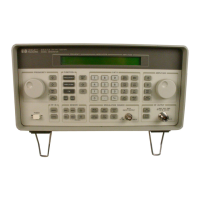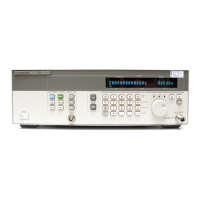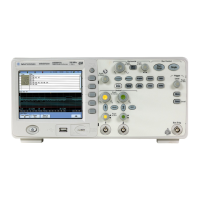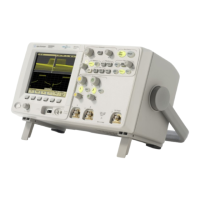66
S:\Hp8960\E1962B CDMA 2000\Pi Release\Reference Guide\Chapters\cdma2000_meas_saudio_desc.fm
Swept Audio Measurements Description
Operating Considerations
Front Panel Access Swept Audio measurements are accessed manually by pressing the front-panel
Instrument selection key.
Mutli-measurement Use When multi-measurements are used with the swept audio measurement, the AF
analyzer makes the number of measurements specified at each point in the sweep. For example, if five
measurement points are specified, and the multi-measurement count is set to 20, a total of 100 measurements
are performed during the sweep.
Interactions with the Audio Analyzer and Audio Generator Instruments The Swept Audio
measurement and the Audio Analyzer instrument cannot be used at the same time to make audio
measurements. If you enable either function while the other function is already enabled, the first function is
turned off and a message is displayed that informs you of this situation.
The amplitude of the Audio Generator instrument can be changed while the Swept Audio measurement is
enabled. However, trying to change the Audio Generator instrument’s frequency while using swept audio
measurements is not allowed, and causes an error message to be displayed.
Specifying a Specific Measurement Frequency Point Within a Sweep If you need to make sure that a
measurement is performed at a specific frequency within the sweep, you can use the following algorithms to
calculate the values to enter:
For example if you wanted to make a measurement at 1004 Hz (F) during a sweep of 15 points (P) that begins
at 300 Hz (S) and ends after 3 kHz (Emin), the first algorithm tells you that 1004 Hz occurs at the fourth point
in the sweep (n). Use the second algorithm to calculate the actual stop frequency (E) you would enter for that
sweep (3585.333 Hz).
To find which point in the sweep (n) corresponds to the frequency you want the sweep to make a
measurement at (F), use the following algorithm -
S = sweep start frequency, P = number of measurement points to make in the sweep, F = specific frequency
to make a measurement at during the sweep, n = measurement point corresponding to F,
Emin = minimum upper sweep frequency
INT= the largest integer value that is less than or equal to the expression in parenthesis. For example, if
the value of the expression is 3.65037, the integer value is 3.0; the value of n would therefore be 4.
To determine the actual stop frequency (E) to enter, use the following algorithm -
E
FS–()P 1–()
n 1–()
------------------------------------ S+=
n 1 INT
FS–()P 1–()
Emin S–
------------------------------------
+=

